The smell. The putrid smell. If you recall this is how I started my previous article then 10 points to you, you’re a genius or an avid fan of my articles.
I’m betting it’s the prior. Today I am talking about the outright stench of the magical comfrey tea.
Comfrey is a herb with many uses. It has a rich history, along with medicinal uses and a great range of garden applications today.
At Beechgrove Garden we are trialling a dry and wet method of brewing comfrey tea in order to make an organic fertiliser high in Nitrogen and Potassium for our hungry plants.
Origins
Originating from Europe and western Asia. Comfrey was believed to have been first documented in ancient Europe.
Its rich history goes back thousands of years and it is believed Dioscorides, who was an ancient Greek botanic physician documented the use of comfrey in treating the wounds of the armies of Alexander of Macedonia.
The genus Symphytum comes from the ancient Greek word ‘syumphuo’ meaning ‘to make grow together’.
The species officinale comes from the Latin word ‘officina’ which was the name of the monastery storeroom for botanical drugs in ancient Europe equivalent to a modern day pharmacy.
Medical uses
The leaves contain calcium, potassium, phosphorus, vitamins A, C, B12 and Allantoin.
Allantoin is a protein with hormonal-like properties that stimulate cell proliferation.
Comfrey has more protein in its overall leaf structure than almost any member of the vegetable kingdom.
Its medicinal uses include treatment for rough skin, burns, cuts, sore joints, broken bones, dry skin and sprains.
Alexander of Macedonia (aka ‘The Great’) was known to use comfrey as slings to treat the broken bones of soldiers due to the lignified, stringy nature of the stems.
He also used it to wrap wounds as the allantoin was thought to heal open wounds before infection set in.
Wildfire!
At Beechgrove Garden we grow a sterile version of comfrey called Bocking 14 (Symphytum officinale ‘Bocking 14’).
This means that it does not set seed and spread. Wild comfrey (Symphytum officinale) spreads like wildfire.
There are in fact, apparently up to 35 species of comfrey the main ones of note and comparison to the officinale species are:
- S.asperum (rough comfrey) has shorter pricklier leaves and more blue coloured flowers.
- S.x uplanidicum (Russian comfrey) a cross hybrid between officinale and asperum it tends to share characteristics of both parent species.
- S.grandiflorum ‘Goldsmith’ (goldsmith comfrey) has leaves that are lighter green and have a golden yellow edge.
- S.officinale ‘Rubrum’ (red comfrey) has smaller deeper red flowers.
Comfrey tea
As I said though rather than focusing on the aesthetics or history of the plant we are growing and using it for the fantastic free fertilizer it makes.
How do we do it? Well if you failed to catch episode eight of this season’s Beechgrove Garden then catch me and Carole going over it in all its glory on BBC iPlayer. We trialled a ‘wet’ and a ‘dry’ method to make this.
Dry
In order to make the dry method we harvest 6kg of comfrey leaves and shredded them up. We stuff them into an old tattie sack then placed a bamboo cane through the top of the sack.
A bucket was then placed inside a conventional water butt and the bamboo can ends feed through the two holes near the top pf the water butt that is meant for emergency water overflow.
The lid was then placed on top of the butt as usual. The way this method works is that essentially the shredded leaves in the sack will slow rot down and ferment in then drip, drip, drip pure concentred comfrey juice into the bucket below.
It is so concentrated that it is diluted a rate of 1:100 with water to feed plants.
The advantage of this method is that is stench free. Air naturally gets in through the overflow water holes in the water butt meaning the aerobic nature allows minimal smell.
The lid is still placed on, however, to stop rain ruining this lovely system!
Wet
The wet method is started similarly to the dry method. 6kg of comfrey leaves are also shredded.
This time though the water butt is filled right to the top with water. The two holes near the top that is meant for emergency water overflow are taped up with masking tape.
The tattie sack full of shredded leaves are placed in and the lid shut for the next four weeks. This method is anaerobic meaning no air enters.
After a month the mixture will be nicely bubbling and fermented and therefore stinking!
The upside is it ready much faster than the dry method and will also ready to use directly without any diluting.
Take care and happy gardening.
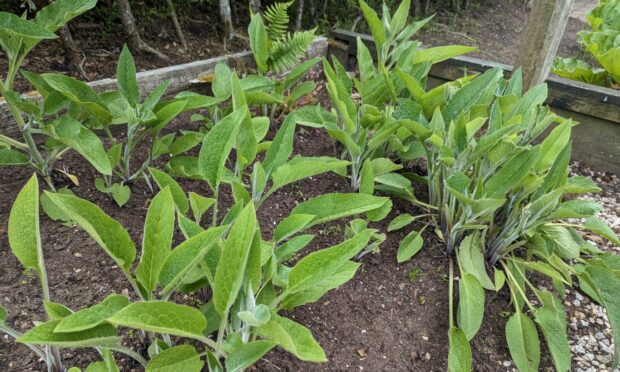
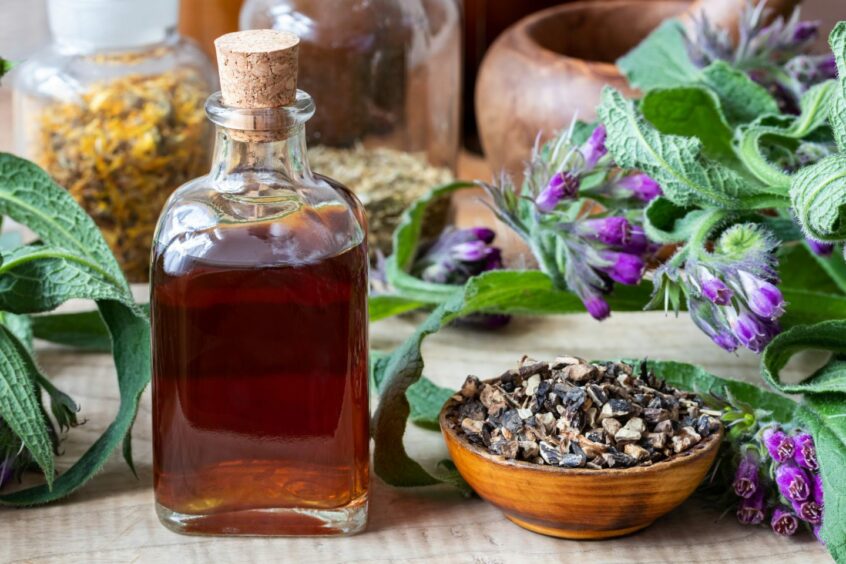
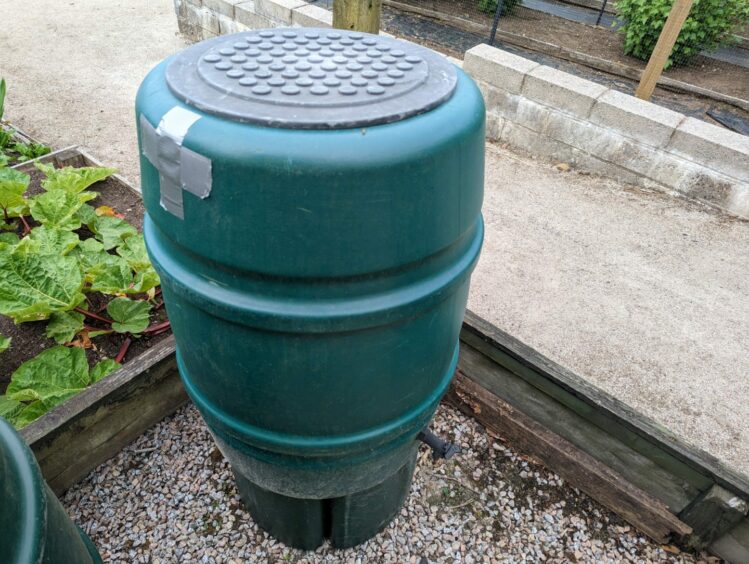
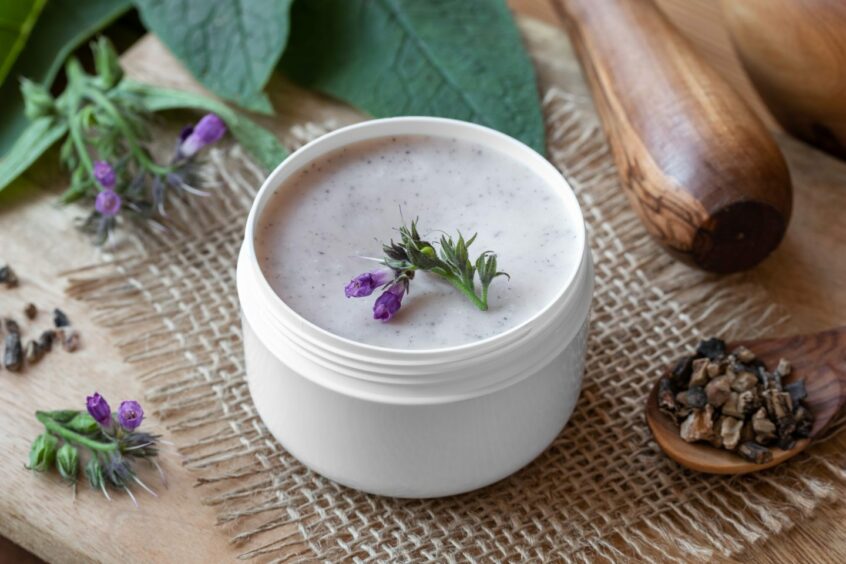
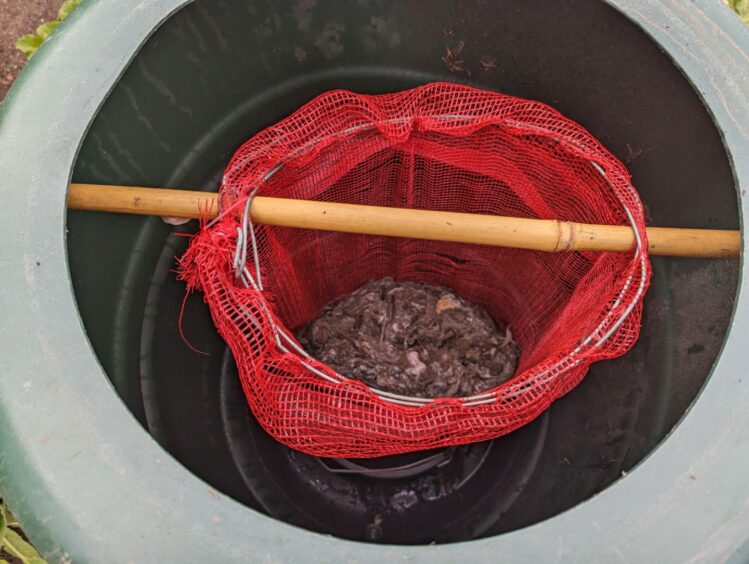



Conversation